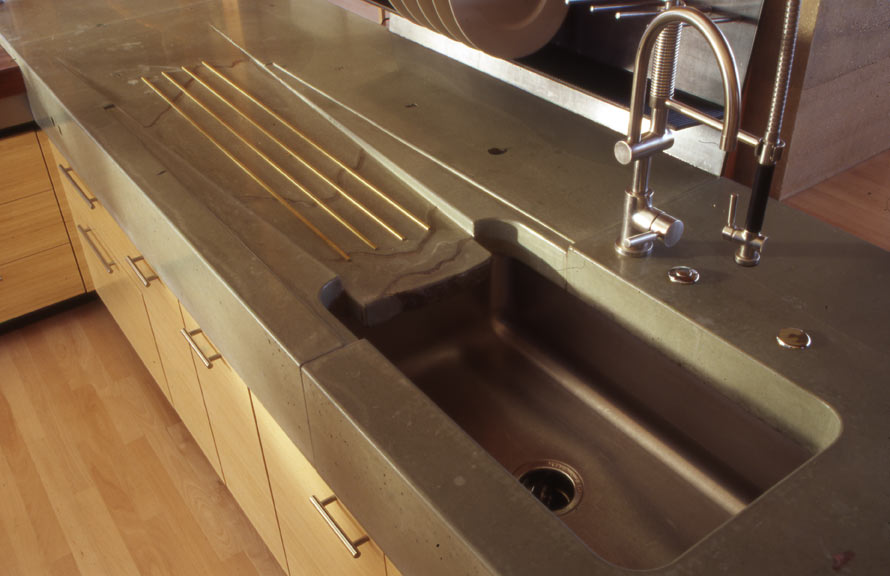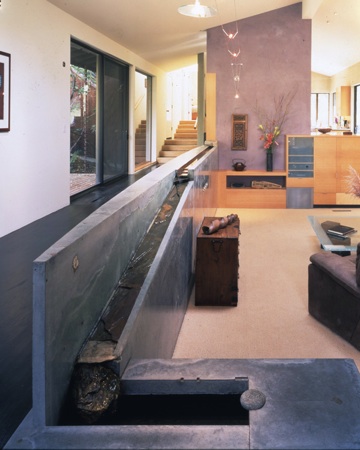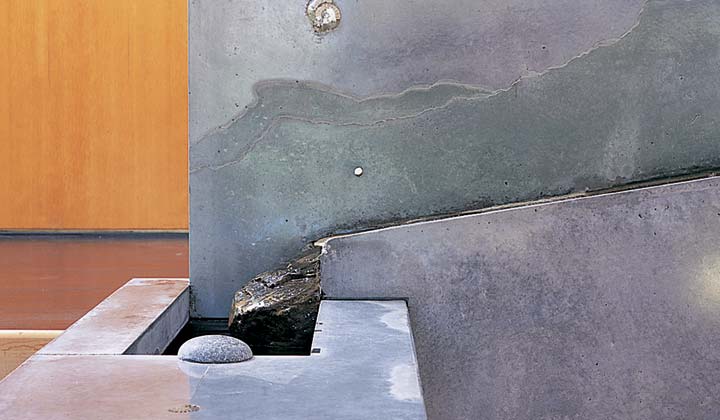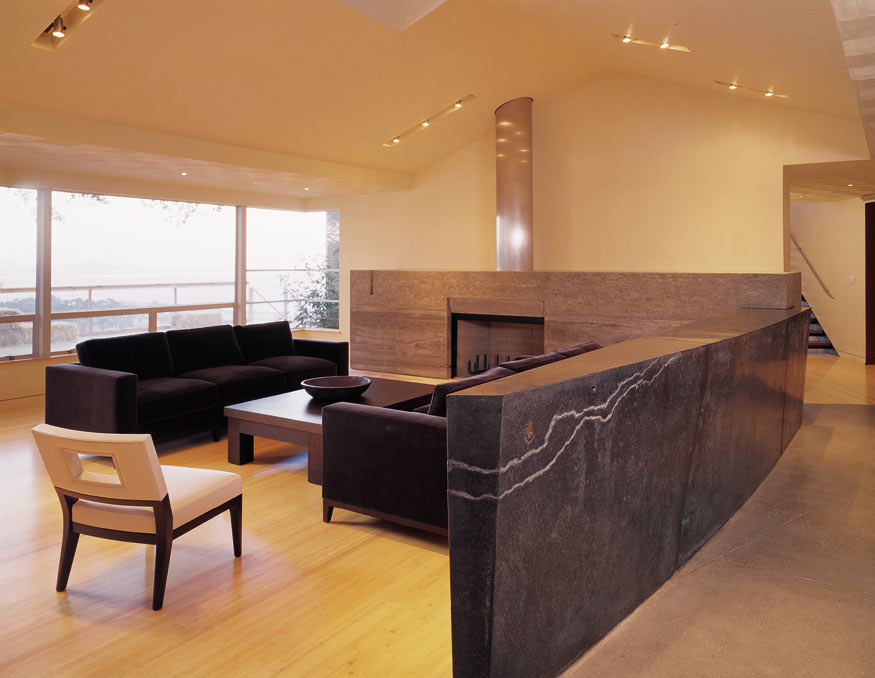Share This Post
Custom Concrete Edge Treatments and Simulated Rock Details
Q: How can I successfully integrate a “chipped” edge or “torn paper concrete” drainboard effect into the overall look of my concrete countertop?
As with any “look” we wish to achieve with concrete counters — or any other medium, for that matter — it helps to understand why we like the look and what it refers to. A chipped edge in any material suggests informality, randomness, hand-hewn spontaneity. These qualities result not from a prolonged act of deliberation, but rather from an accidental moment in time — albeit a controlled accident. Something like this needs to be authentic.
This kind of effect can’t be tooled in a mold or carefully sculpted, but needs to be achieved like a force of nature. I have seen many concrete walls that were uniformly “bush-hammered” with a pneumatic tool to chip out and reveal the underlying aggregate. I see no reason why a concrete countertop edge cannot be handled the same way. Perhaps while the countertop is still in the mold and curing, you can introduce small holes along a pre-determined “fault” line, and then after de-molding, you can whack off portions of the edge along that line (something akin to pre-split English muffins).
However, if you are leery of such spontaneous mayhem applied to a finished piece, maybe a more controlled approach might work for you. Create the desired edge look on a sacrificial length of concrete, cast a urethane negative mold of the piece, and simply use that as the edging for your new mold. Similarly, stamped concrete molds are usually cast in this manner — from actual stones — to replicate the natural texture of stone.
The “torn paper concrete” drainboard effect can be achieved in a similar way — through repeated attempts to tear different materials such as linoleum and thin wood and then re-cast them in urethane casting rubber to “capture” the authentic look of randomness in nature.

Used sparingly, these techniques can complete and transform your countertop. Used indiscriminately, such devices can quickly become tiresome and gimmicky. For example, in the 70’s and 80’s, many a designer and homeowner followed their muse on polished granite countertops and backsplashes with “natural” straight-from-the-quarry random edges. These edges popped up everywhere, especially on kitchen back splashes and shower surrounds, for some reason. While trying to emulate the natural rock formations on the uppermost crust of the quarry, many of them ended up looking like the top crusts of thinly sliced coffee cake. Unfortunately those natural shapes they were striving to replicate may not have been that natural after all — some actually stemmed from the quarry drill bits holes that line up when the gigantic cubes of granite are cut and hauled out. The net result is a fairly contrived look: overdone, been there, done that…. So always follow my “look” and “goo-gad inlay” motto for restraint: “If in doubt, leave it out.”

Share This Post


